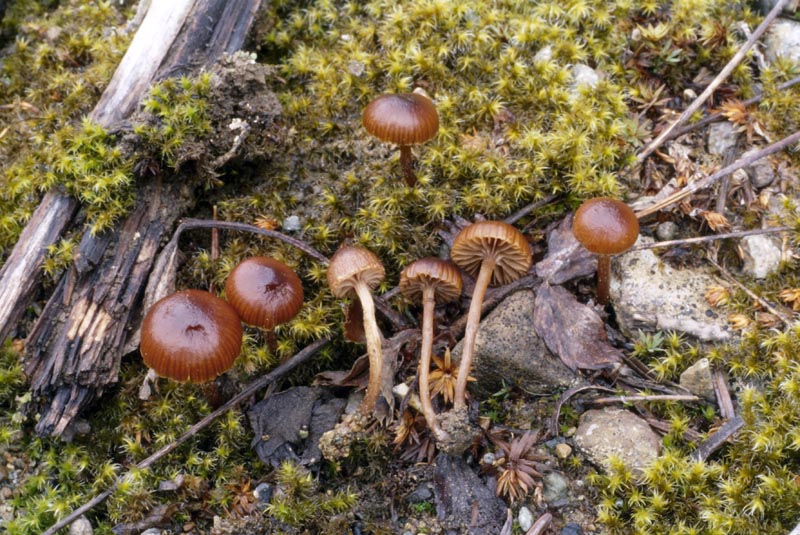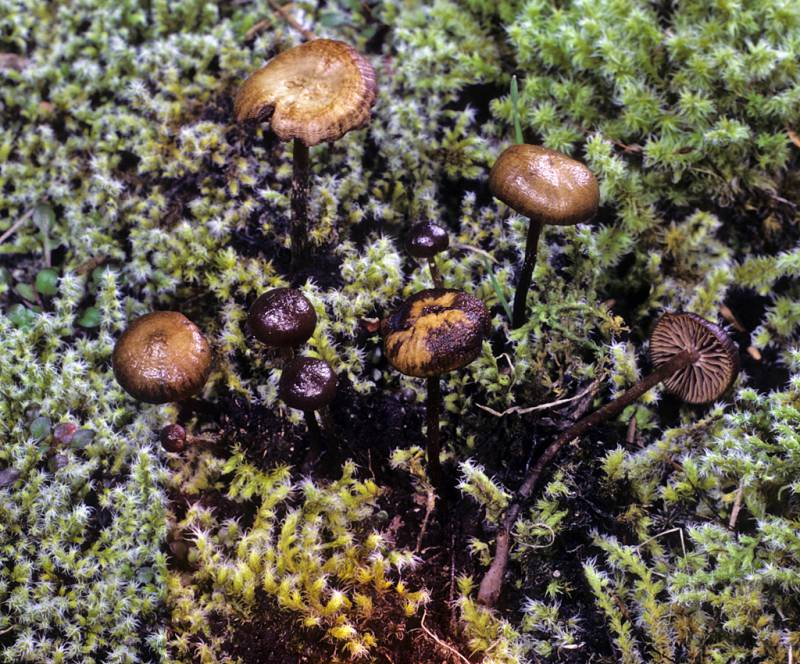Distribution: Has been reported from much of the temperate Northern Hemisphere.
Habitat: Common at higher elevations
Substrate: Moss
Spores: July-September
Conservation Status: Not of concern
Edibility: It is too small to be of culinary interest and is not psychoactive.
mountain brownie, mountain moss psilocybe
Cap: 0.5-2.5 cm across, convex to umbonate; deep reddish brown, drying paler; smooth.=, slightly tacky. Gills: adnate, distant; reddish brown. Stem: 25-50 x 1.5 mm; dark brown; smooth. Odor not distinctive. Taste not distinctive. Spores: purple-brown, ellipsoid.
It is too small to be of culinary interest and is not psychoactive.
Psilocybe montana is a small, non-bluing moss-dweller, usually amongst plants of the genus Polytrichum. It has a hemispheric or convex-flattened, reddish brown, translucent-striate, hygrophanous cap, and is reminiscent of a galerina in habitat and appearance. However, the dark spores clearly separate it from the galerinas. As its name suggests, it is most common at higher elevations and has been reported from much of the temperate Northern Hemisphere. In the PNW, it can be found beginning in late spring.
Sources: Trudell, Steve and Joe Ammirati. Mushrooms of the Pacific Northwest. Portland, Timber Press, Inc. 2009. Lincoff, Gary. National Audubon Society Field Guide to North American Mushrooms. New York, Alfred A. Knopf, 1981. Phillips, Roger. Mushrooms and Other Fungi of North America. Buffalo, Firefly Books Ltd. 2010.
PNW Herbaria: Specimen records of Psilocybe montana in the Consortium of Pacific Northwest Herbaria database
CalPhotos: Psilocybe montana photos





